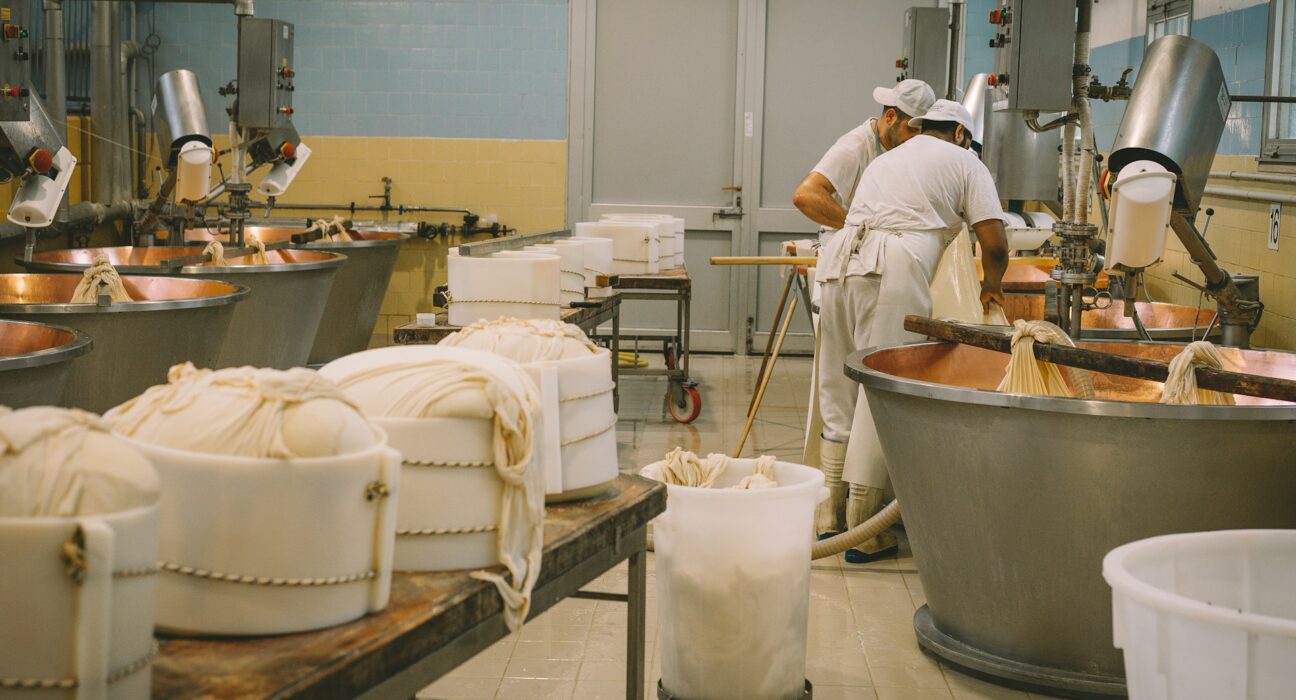In today’s globalized food industry, consumers are becoming increasingly conscious about the origins of their meals. The journey from farm to fork has never been more complex, and with this complexity comes a growing need for transparency in the food supply chain.
This blog post delves into the critical importance of supply chain transparency in food manufacturing, exploring how it impacts food safety, consumer trust, and the overall integrity of the food industry. The concept of traceability in food production has gained significant traction in recent years.
As consumers demand more information about their food sources, manufacturers are under increasing pressure to provide clear, accurate, and accessible information about their products’ journey from raw ingredients to finished goods.
This shift towards transparency isn’t just a trend; it’s a fundamental change in how the food industry operates, with far-reaching implications for both businesses and consumers.
Understanding Supply Chain Transparency
The Essence of Transparency
Supply chain transparency in food manufacturing is more than just a buzzword, it’s a critical practice that ensures the integrity and safety of our food system. This concept encompasses the complete visibility of a product’s journey, from farm to fork, including:
• Ingredient sourcing
• Processing methods
• Packaging procedures
• Distribution channels
By implementing robust traceability in food production, manufacturers can create a verifiable path that allows all stakeholders, consumers, regulators, and industry partners, to access and understand the origins and handling of food products.
Benefits of a Transparent Supply Chain
Embracing supply chain transparency offers numerous advantages:
- Enhanced Food Safety: Quick identification and resolution of potential issues
- Improved Quality Control: Better oversight of all production stages
- Increased Consumer Trust: Open communication builds brand loyalty
- Risk Management: Proactive approach to potential supply chain disruptions
- Ethical Sourcing: Promotion of responsible and sustainable practices
As consumers become increasingly conscious of their food choices, manufacturers who prioritize transparency are better positioned to meet market demands and regulatory requirements.
The Role of Technology in Enhancing Transparency
In today’s dynamic food industry, food supply chain management has become a paramount concerns for both consumers and manufacturers. Technological advancements are crucial in addressing these challenges, revolutionizing how food companies track and share information about their products.
Blockchain: Ensuring Traceability and Trust
Blockchain technology stands out as a game-changer in the quest for supply chain transparency. By creating an immutable record of transactions, blockchain enables:
• Farm-to-Table Tracking: Every step of a product’s journey is recorded, providing a verifiable history.
• Rapid Recall Response: In case of safety concerns, affected products can be quickly identified and traced.
• Enhanced Consumer Trust: Transparent information builds confidence in food manufacturers’ ethical sourcing practices.
IoT Devices: Real-Time Monitoring for Quality Assurance
Internet of Things (IoT) devices are transforming food supply chain management by providing real-time data on:
• Temperature fluctuations during transportation
• Humidity levels in storage facilities
• Precise location tracking of shipments
This constant stream of information ensures that products maintain quality and safety standards throughout their journey, further reinforcing ethical sourcing commitments.
By leveraging these technologies, food manufacturers can not only improve their operational efficiency but also meet the growing consumer demand for transparency in the food supply chain.
The Impact on Food Safety
Supply chain transparency has become a cornerstone of modern food manufacturing, with far-reaching implications for food safety and ethical sourcing practices. This transparency allows manufacturers to:
- Identify and Mitigate Risks: With a clear view of the entire supply chain, potential safety hazards can be spotted and addressed proactively.
- Implement Rapid Traceability: In the event of a food safety concern, manufacturers can quickly pinpoint the source and take targeted action.
- Foster Accountability: When suppliers know their practices are visible, they’re more likely to adhere to strict safety and quality standards.
By prioritizing SC transparency, food manufacturers not only enhance their ethical sourcing practices but also significantly bolster their ability to ensure the safety and quality of their products.
Building Consumer Trust Through Transparency
In today’s market, where consumer skepticism about food quality is on the rise, transparency has become a crucial factor in building trust. Implementing robust traceability in food production not only demonstrates a commitment to honesty but also empowers consumers to make informed decisions.
The Power of Transparency
• Enhances consumer confidence by providing detailed information about ingredients and sourcing
• Allows consumers with dietary restrictions or ethical concerns to choose products aligned with their values
• Serves as a powerful marketing tool, turning satisfied customers into brand advocates
Implementing Effective Food Supply Chain Management
Incorporating advanced food supply chain management systems can significantly improve transparency:
- Real-time tracking of ingredients from farm to table
- Detailed documentation of production methods and quality control measures
- Clear labeling that communicates product information effectively
By prioritizing transparency, food manufacturers can build lasting relationships with consumers, enhance their brand reputation, and ultimately drive business growth in an increasingly competitive market.
Challenges in Implementing Supply Chain Transparency
Navigating Multifaceted Challenges
Implementing traceability in food production presents significant hurdles for manufacturers, despite its clear advantages. The intricacy of modern supply chains makes tracking and verifying information a complex endeavor. This challenge is compounded by:
• Cost Implications: Investing in new technologies and training staff for enhanced transparency can be financially burdensome, especially for smaller producers.
• Data Security Concerns: As more product and process information is collected and shared, protecting sensitive data from cyber threats becomes paramount.
• Balancing Act: Manufacturers must strike a delicate balance between transparency and data security to maintain trust with consumers and partners alike.
The Path Forward
Despite these obstacles, embracing supply chain transparency is crucial for long-term success. By viewing these challenges as opportunities for innovation and improvement, food manufacturers can:
- Enhance food safety protocols
- Build stronger consumer trust
- Elevate brand reputation
Ultimately, the investment in transparency measures serves as a cornerstone for sustainable growth and consumer loyalty in the competitive food production landscape.
The Future of Supply Chain Transparency in Food Manufacturing
The landscape of food supply chain management is rapidly evolving, driven by technological advancements and increasing consumer demand for information. As we look ahead, several key developments are shaping the future of supply chain transparency:
• Smart Packaging: Innovative solutions like QR codes on product packaging will allow consumers to access detailed information about sourcing, production, and distribution directly from their smartphones.
• AI-Powered Management Systems: Artificial intelligence will revolutionize SC transparency, offering real-time tracking and predictive analytics to optimize operations and ensure product integrity.
• Industry-Wide Collaboration: Standardized practices and shared data platforms will emerge as stakeholders work together to establish common transparency protocols.
• Enhanced Food Safety and Sustainability: As transparency becomes the norm, it will drive improvements in safety measures and sustainable sourcing practices throughout the industry.
Manufacturers who prioritize transparency in their operations will be well-positioned to meet consumer expectations and thrive in this evolving landscape. To learn more about implementing effective supply chain transparency in your food manufacturing processes, contact a team of experts today.
Conclusion
Supply chain transparency is no longer just a nice-to-have feature in food manufacturing; it’s becoming a necessity. From enhancing food safety to building consumer trust, the benefits of transparency are clear.
While implementing transparent practices may come with challenges, the long-term rewards in terms of consumer loyalty, brand reputation, and overall industry improvement make it a worthwhile endeavor.
As consumers, we all have a role to play in encouraging and supporting transparency in the food industry. By seeking out information about our food and supporting manufacturers who prioritize transparency, we can contribute to a safer, more ethical, and more sustainable food system.
The journey towards complete supply chain transparency in food manufacturing may be complex, but it’s a journey worth taking for the benefit of all stakeholders in the food industry.








Leave feedback about this